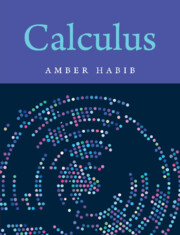Book contents
Summary
Our work on differentiation in the previous chapter has brought us to a fork in the road. We can pursue the implications of the first fundamental theorem to obtain techniques for computing integrals. Alternately, we can use the Fermat and monotonicity theorems to further develop the relationship between functions and their derivatives, leading to new techniques of calculating limits, approximation of functions by polynomials, use of integration to measure arc length, surface area and volume, and error estimates for numerical calculations of integrals.We have chosen to take up integration in this chapter. If you are more interested in the other applications of differentiation you can read Chapter 6 first.
The Second Fundamental Theorem
A function F is called an anti-derivative of f if F = f . Let us make some observations regarding the existence and uniqueness of anti-derivatives:
1. Not every function has an anti-derivative. By Darboux's theorem (Theorem 4.5.12), if f = F then f has the intermediate value property. Thus, a function with a jump discontinuity, like the Heaviside step function or the greatest integer function, cannot have an anti-derivative.
2. On the other hand, the first fundamental theorem shows that every continuous function on an interval has an anti-derivative.
3. A function's anti-derivative is not unique. For example, both sin x and 1 + sin x are anti-derivatives of cos x.
4. On the other hand, two anti-derivatives of the same function over an interval can differ only by a constant. Theorem 4.5.7 states that if F = G on an interval I, then F G is constant. Thus, every anti-derivative of cos x over an interval I has to have the form sin x + C, where C ∊ R.
5. Over non-overlapping intervals, two anti-derivatives of a function need not differ by the same constant. For example, the Heaviside step function and the zero function are anti-derivatives of the zero function over (-∞,0) ∪ (0,∞).
The first fundamental theorem established a connection between integration and differentiation: if we are able to calculate the definite integrals of a continuous function, then the first fundamental theorem gives us its anti-derivative. The next theorem uses that connection to provide an approach for evaluating definite integrals by using anti-derivatives.
- Type
- Chapter
- Information
- Calculus , pp. 173 - 216Publisher: Cambridge University PressPrint publication year: 2023



